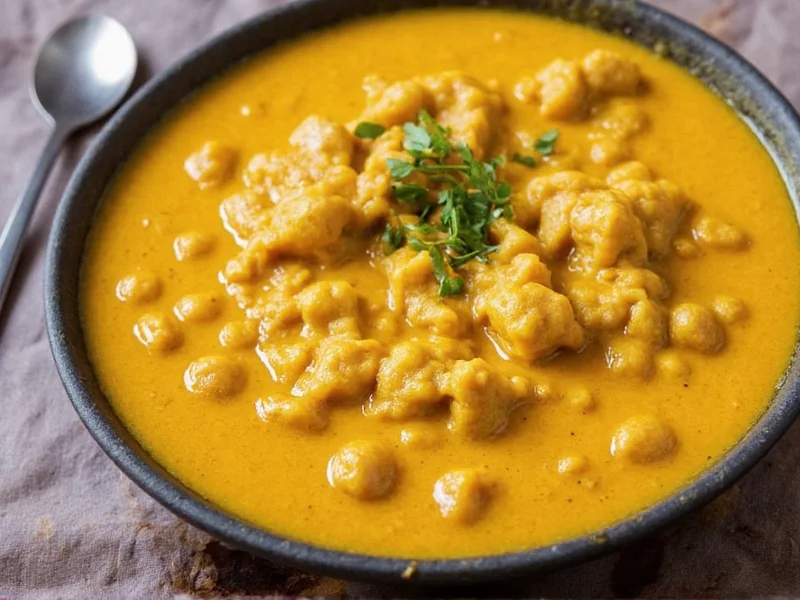Running out of curry powder or paste doesn't mean abandoning your recipe. Whether you're cooking chicken tikka masala, Thai green curry, or a simple vegetable stew, these practical curry substitutes deliver authentic flavor profiles using common pantry staples. Understanding the components of curry—primarily turmeric, cumin, coriander, and various warming spices—helps you create effective alternatives that maintain the dish's intended character.
Understanding Curry Composition
Curry isn't a single spice but a complex blend varying by region. Indian curry powders typically contain turmeric, cumin, coriander, fenugreek, and chili, while Thai curry pastes incorporate fresh ingredients like lemongrass, galangal, and kaffir lime leaves. Recognizing these base components allows for smarter substitutions that preserve the dish's essential flavor profile rather than creating something entirely different.
Top 7 Curry Powder Substitutes
When your recipe calls for curry powder but your spice rack comes up short, these alternatives work in most savory applications. Each substitute maintains the earthy, warm characteristics essential to curry dishes while using ingredients you likely already have.
| Substitute | Ratio | Best For | Flavor Notes |
|---|---|---|---|
| Homemade Blend | 3 tsp turmeric, 1 tsp cumin, 1 tsp coriander, 1/2 tsp ginger | All-purpose use | Balanced earthy flavor, closest to commercial curry powder |
| Garam Masala + Turmeric | 2 tsp garam masala, 1 tsp turmeric | Indian dishes | Warmer, sweeter profile; add chili for heat |
| Mustard Powder Combo | 1 tsp mustard powder, 1 tsp paprika, 1/2 tsp turmeric | Quick fixes | Tangy alternative; works well in stews |
| Cajun Seasoning | 1.5 tsp Cajun seasoning, 1/2 tsp turmeric | Hearty dishes | Spicier profile; great for meat recipes |
Curry Paste Alternatives for Thai and Indian Dishes
Replacing curry paste requires addressing both the spice blend and liquid components. For red curry paste substitute, combine 1 tablespoon soy sauce, 1 teaspoon lime juice, 1/2 teaspoon each of garlic powder and paprika, and 1/4 teaspoon chili flakes. For a green curry alternative, add 1/4 teaspoon dried basil and mint to the red curry substitute formula.
When substituting for Indian curry paste in recipes like butter chicken, try mixing 2 tablespoons tomato paste with 1 teaspoon each of cumin, coriander, and turmeric, plus 1/2 teaspoon ginger powder. This creates a similar base that responds well to the cream and tomato elements in the dish.
Dietary-Specific Curry Substitutions
For gluten-free curry substitute options, ensure all spice blends are certified gluten-free, as some commercial curry powders contain fillers. Most homemade blends using pure spices are naturally gluten-free.
Vegan curry paste alternatives simply require avoiding fish sauce (common in Thai pastes). Substitute with 1 teaspoon soy sauce or tamari plus 1/2 teaspoon sugar. For coconut-based curries, full-fat coconut milk provides the necessary creaminess without dairy.
When Substitutes Won't Work
Some dishes absolutely require authentic curry components. Traditional Thai tom kha gai (coconut soup) needs proper galangal and kaffir lime leaves, which have no true substitutes. Similarly, complex Indian vindaloo requires specific spice ratios that basic substitutes can't replicate. In these cases, consider modifying the recipe rather than forcing a substitute.
Practical Application Tips
When using a curry powder substitute without garam masala, add 1/4 teaspoon black pepper to enhance turmeric absorption. For what to use instead of curry powder in chicken dishes, marinate the protein in your substitute blend for at least 30 minutes to allow flavors to penetrate.
Adjust liquid content when substituting paste for powder or vice versa—powder substitutes typically require 2-3 tablespoons additional liquid per teaspoon used. Always taste and adjust seasoning after 10 minutes of cooking, as spice flavors develop differently in substitutes.
Creating Your Own Signature Blend
The best substitute for red curry paste often comes from understanding what makes curry work. Start with a base of equal parts turmeric, cumin, and coriander, then customize based on your recipe's needs:
- Add smoked paprika for depth in meat dishes
- Include cardamom for sweeter curries
- Boost with mustard powder for tang in vegetable dishes
- Incorporate cinnamon for complex, warming notes
This approach creates a homemade curry powder recipe tailored to your specific dish rather than a one-size-fits-all solution. Store any extra blend in an airtight container for up to two months.
Frequently Asked Questions
Can I substitute curry powder for curry paste?
Yes, but with adjustments. Use 1 teaspoon curry powder for every tablespoon of curry paste, plus 2 tablespoons liquid (coconut milk or broth). Since paste contains fresh ingredients and oil, you'll need to compensate for both the moisture and fresh flavor elements.
What's the best quick curry substitute for beginners?
For easy curry substitute for beginners, combine equal parts turmeric, cumin, and coriander with a pinch of garlic powder and black pepper. This three-spice blend creates a balanced foundation that works in most recipes without overwhelming complexity.
How do I adjust recipes when substituting curry ingredients?
When using curry substitutes, add them early in the cooking process to allow flavors to develop. For powder substitutes in paste recipes, increase liquid by 25% and cook 5-10 minutes longer. Always taste after 15 minutes of simmering and adjust salt and acid (lemon juice or vinegar) to balance flavors.
Can I use turmeric alone as a curry substitute?
Turmeric alone makes an inadequate curry substitute as it provides only the yellow color and earthy base note without the complex spice profile. At minimum, combine turmeric with cumin and coriander in a 3:1:1 ratio to create a functional base that captures curry's essential characteristics.
Do curry substitutes work equally well in all dishes?
No, curry substitutes perform differently across applications. They work best in hearty stews and braises where flavors have time to meld. They're less effective in delicate dishes like Thai coconut soups where fresh ingredients are essential. For chicken and vegetable dishes, most substitutes work well with minor adjustments to cooking time and liquid content.











 浙公网安备
33010002000092号
浙公网安备
33010002000092号 浙B2-20120091-4
浙B2-20120091-4